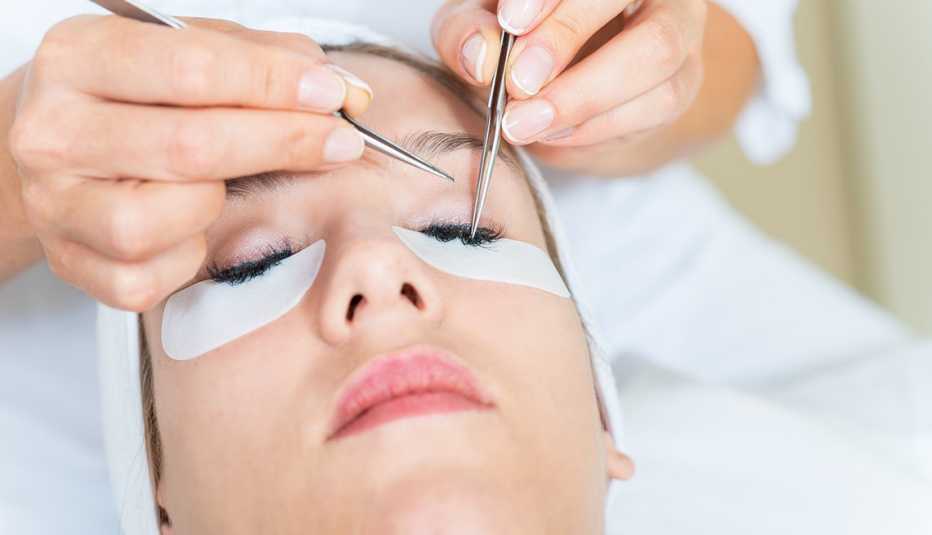AARP Hearing Center


Our eyes are the most prominent facial feature we can show the world — and they've become the focus of attention ever since our mouths and noses have been covered by masks to prevent the spread of COVID-19. The pandemic is surely behind at least some of the growing interest in eye beauty, including salon and at-home eyelash augmentation procedures. The false-eyelash market alone is expected to expand steadily and be worth almost $2 billion worldwide by the end of 2024, with the U.S. fueling much of its growth, according to Market Research Future, a global market research company.


Extensions have become one of the most popular ways for women to build up their eyelashes (besides mascara, of course). While they are generally safe, applying them can sometimes lead to complications, especially if you don't take proper precautions before and after the procedure.
"The irony here: You're trying to get your lashes to look better but can end up damaging them in the process,” Andrea Thau, a New York City–based optometrist and past president of the American Optometrist Association, says, referring to extensions as well as to other methods of lash enhancement (see below).
Here's what you should know about lash extensions.
What they are
Eyelash extensions are individual fibers glued onto natural lashes, one by one, with tweezers, to enhance the appearance of length and fullness. The painstaking procedure (typically, anywhere from 50 to 150 lash extensions are applied to each eye) requires skill and precision and should be done in a spa or salon by a licensed aesthetician or cosmetologist. The initial process takes one to two hours.
“The application shouldn't be painful,” says Clementina Richardson, founder of Envious Lashes, a New York City eyelash-extension salon. “Some clients experience a slight stinging sensation — that's normal.”
Cost
Price varies, depending on where you live and your technician's level of experience, but expect to shell out $100 to $500 for a full set of extensions. Touch-ups, recommended every two to three weeks (lash extensions shed with your natural lashes), will run $75 to $100.


































































More on health
Makeup Care Tips for Beautiful, Healthy Eyes
Good hygiene includes knowing when it's time to toss your mascara, eyeshadow and eyelinerWhat's Causing Your Puffy Lids and Watery Eyes?
There are a range of reasons and treatments for swelling and irritationTop 10 Age-Related Eye Problems
Early detection can keep you seeing clearly